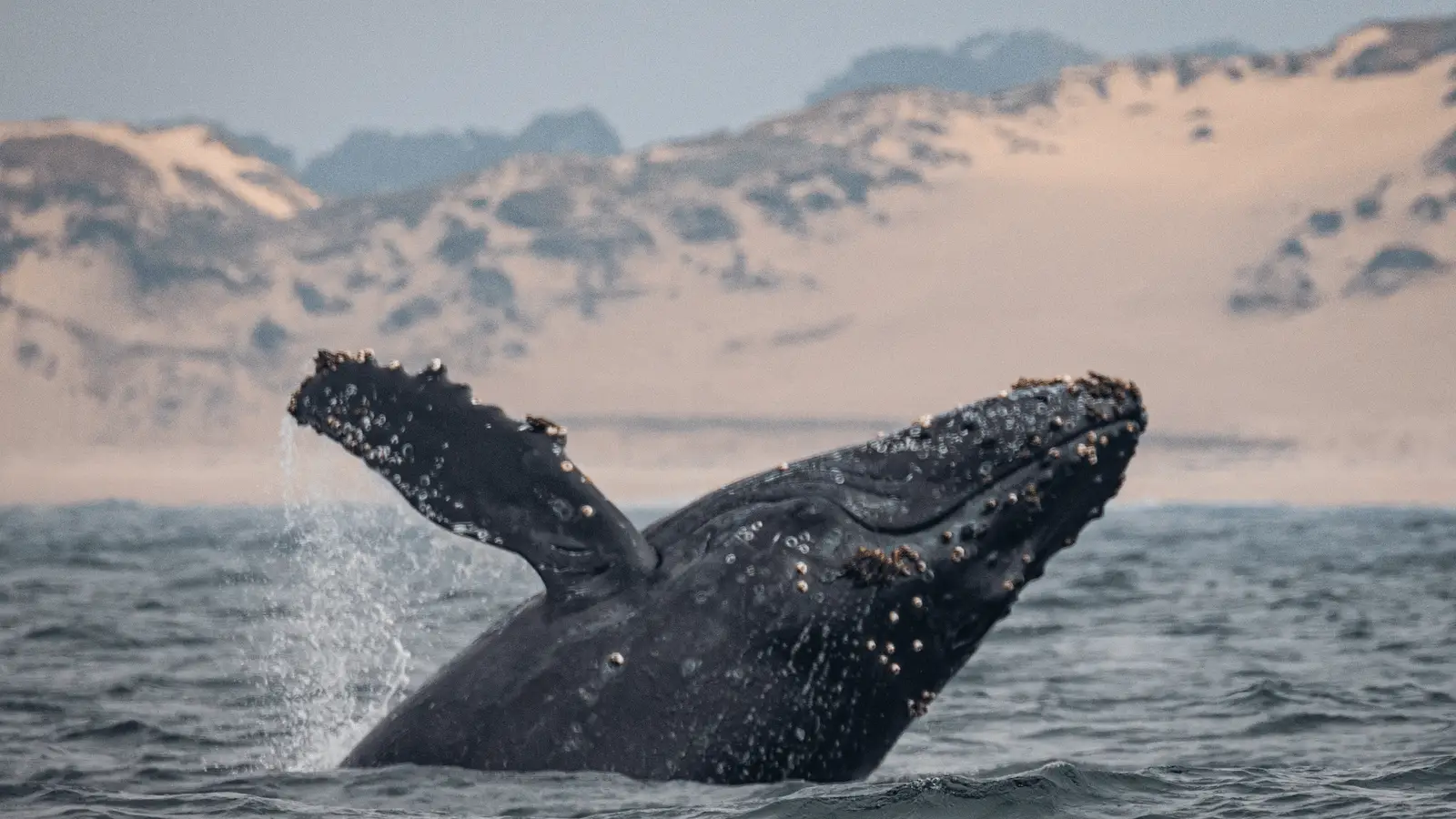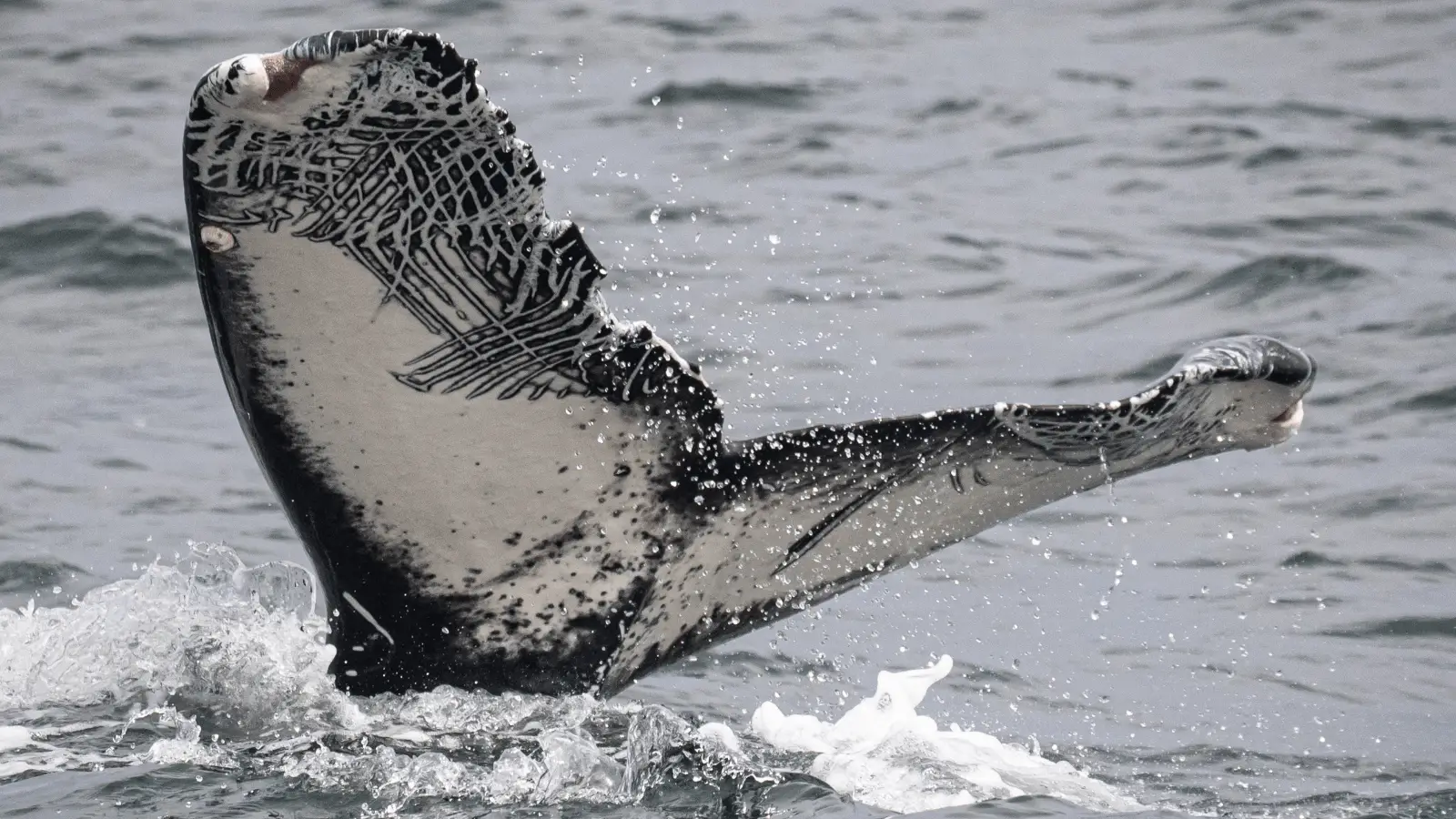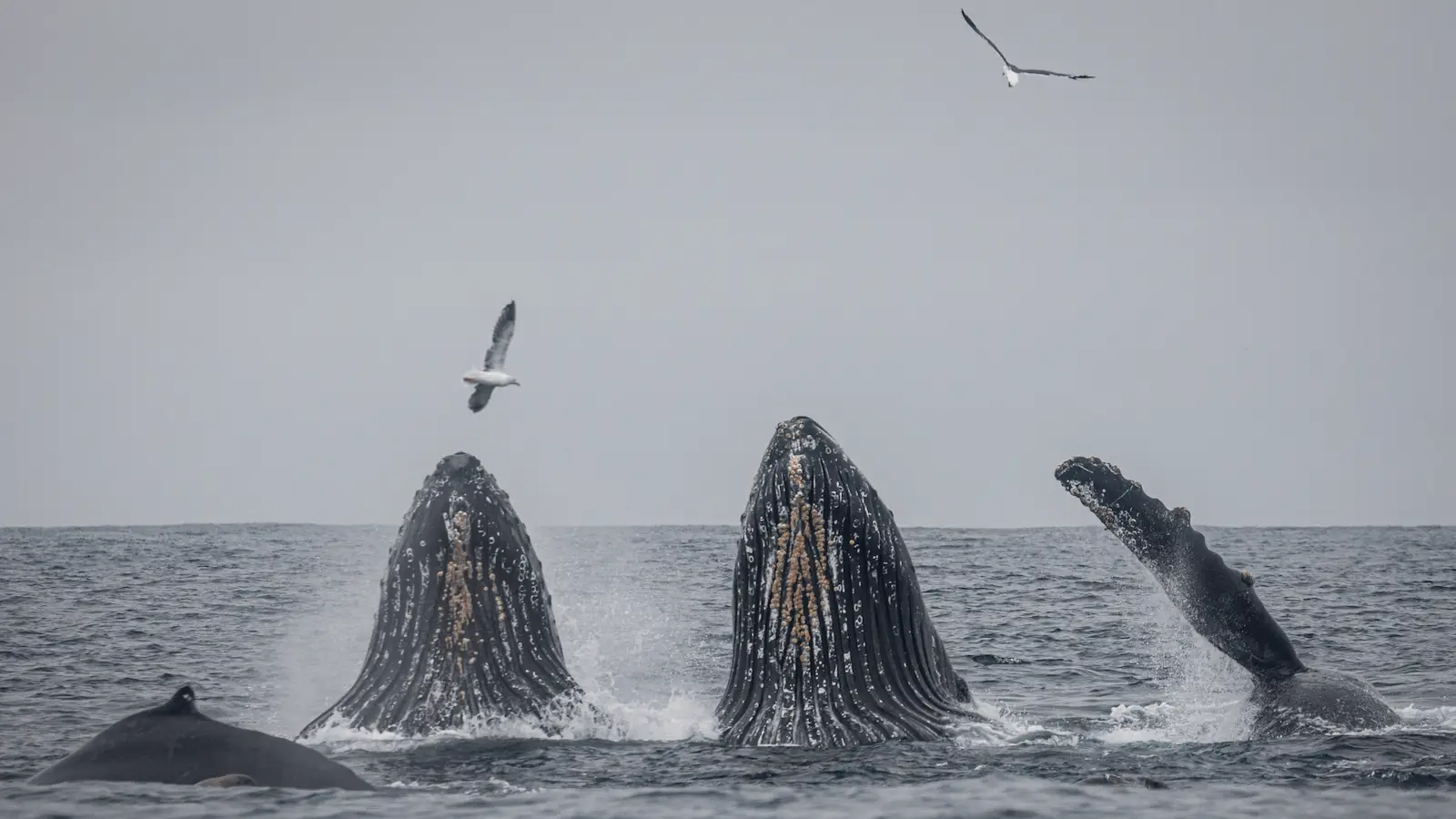The more things change, the more they stay the same — at least when it comes to the thrills of whale- and wildlife-watching in Monterey Bay.
A recent shift in the migratory pattern of some humpback whales means you may spot a few wintering in the national marine sanctuary, instead of the warmer waters off Mexico. Yet even if you don’t see any of the leviathans, who typically head south by January to mate and bear calves, you’re guaranteed to see other fascinating marine mammals.
Nancy Black, owner of Monterey Bay Whale Watch and a marine biologist, has been observing and researching the behavior of marine mammals in Monterey Bay for more than 30 years. “We see whales here year round, but there are different seasons for different whales,” she explained. Her company’s 2.5-hour and longer cruises start at $65 for adults, $54 for children.
For a complete list of the top whale watching tours in Monterey click here.
Featured Photo: Mike Doherty

Gray whales migrating from Alaska to Mexico pass Monterey Bay as they head south December through mid-February, and then again as they head north mid-February through April, according to Black, who often captains one of her company’s three whale-watching boats.
Blue whales — the largest animals on the planet, up to 100 feet long — are “less predictable,” she noted. “We don’t know exactly when they’re going to be here lately,” Black said. “They go where the krill is, which is a small shrimp-like animal that’s only an inch long. They look for big patches of it, but nobody knows how they find it and communicate where it is… late summer and fall is the best chance.”

For their part, humpback whales traditionally appear in the nutrient-rich bay mid-April through December. “Sometime in December, they start heading south to Mexico, but they don’t all start heading south at the same time,” Black said. “The pregnant females are the first ones to head south, because they want to have their calves in those warm protected waters. The juveniles usually head out at the end. What’s been interesting in the last few years is that as the humpback population has gone up, we’ve been seeing some year round.”
Mike Sack, who co-owns Sanctuary Cruises and captains its eco-friendly, “clean diesel” boat out of Moss Landing, says his location close to deep water is ideal for getting to whales quickly. “Just two miles outside of the harbor, I’ve got 20 humpback whales around,” he said. His 2.5-hour and longer cruises start at $75 for adults, $65 for children.
With their breathtaking breaches and loud spouting, humpback whales may be the showiest of Monterey Bay’s marine wildlife. Captain Christian Hestness of Bella on the Bay also treasures their tendency to approach his 47-foot-sailing yacht, while he observes the federal mandate of staying 100 yards away.

“We stay very respectful of their activities and what they’re doing, and try not to impede what they’re up to,” Hestness said. “If they want to come over and be curious, that’s another story — we shut down and just let them do their thing.”
Their thing includes chasing a “bait ball” of small fish to his boat, under which the whales’ prey tries to hide. “That’s always amazing, and that happens often,” Hestness said. “They’re gentle, sweet creatures. They know the boat is there, they maneuver around you, and they’ll definitely have interactions with you.”
Hestness sails mid-February through October, with private 4-hour wildlife cruises offered by reservation only for $850 for up to six guests. He also offers private sailing cruises starting at $275 for one hour.
The bay’s other distinctive denizens can help make up for when humpbacks are absent. Risso’s dolphins, which can dive to 1,000 feet deep but also spend plenty of time at the surface, are the most frequently spotted species of dolphins, according to Sack, although the more playful, long-beaked common dolphins and Pacific white-sided dolphins may also be seen.

Black said her passengers see Risso’s dolphins on over 80 percent of the trips. “They’ve become quite abundant over the years,” she noted. “They can be in groups of 10 or 20, or up to several thousand, and they feed only on squid.”
Dolphin aficionados can also keep their eye out for the rarer northern right whale dolphin, which are black on top and white underneath, with no dorsal fin. “A lot of people hope to see that type because they are so unique,” Black said.
Many whale-watching passengers are also captivated by the numerous sea lions and southern sea otters in Monterey Bay, but the latter deserve special credit, according to Sack. “Those cuddly, little cute sea otters are the reason we have the Monterey Bay National Marine Sanctuary,” he said, referring to the preserve established in 1992 that includes 276 miles of shoreline from Marin County to Cambria.

Once abundant along the Pacific Coast, but nearly hunted to extinction by the early 1900s, the southern sea otter relies on its thick fur — “the densest fur of any animal on the planet,” Sack said — to combat the ocean’s chill.
“In the 1970s, there was a big push to produce and drill for oil here, and there was a movement realizing that one oil spill would wipe out the entire population,” he noted. “It’s very important for that fur to stay clean; if an oil spill saturated their fur, the sea otters wouldn’t be able to stay warm and survive.”
Today, the southern sea otter population numbers about 3,000, found only between 80 miles north and south of Monterey Bay, according to Sack, with the highest concentration near Moss Landing.
An earlier version of this story appeared in the San Francisco Chronicle.
Looking for more things to do in the area?
Visit our What to Do in Northern California page!

